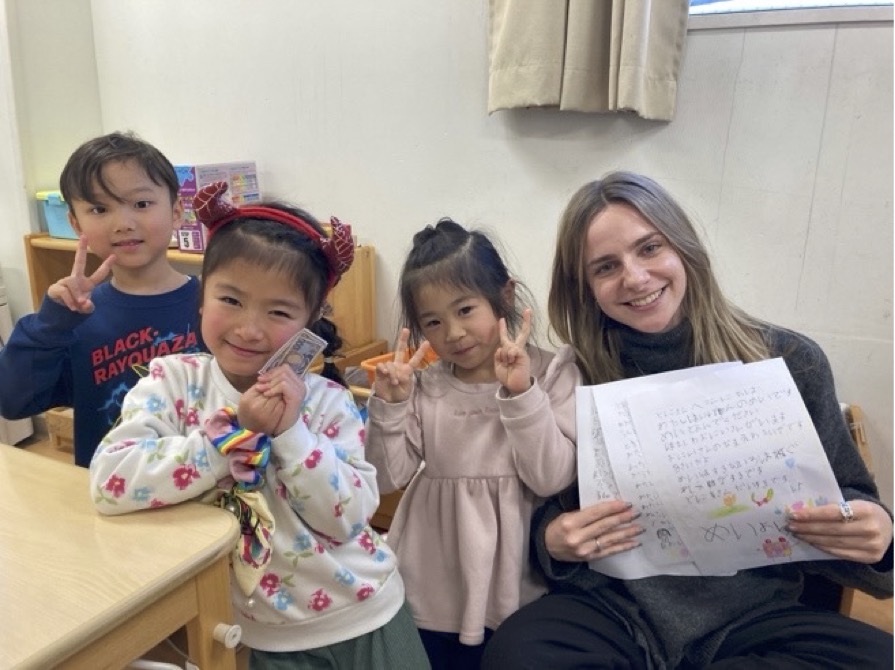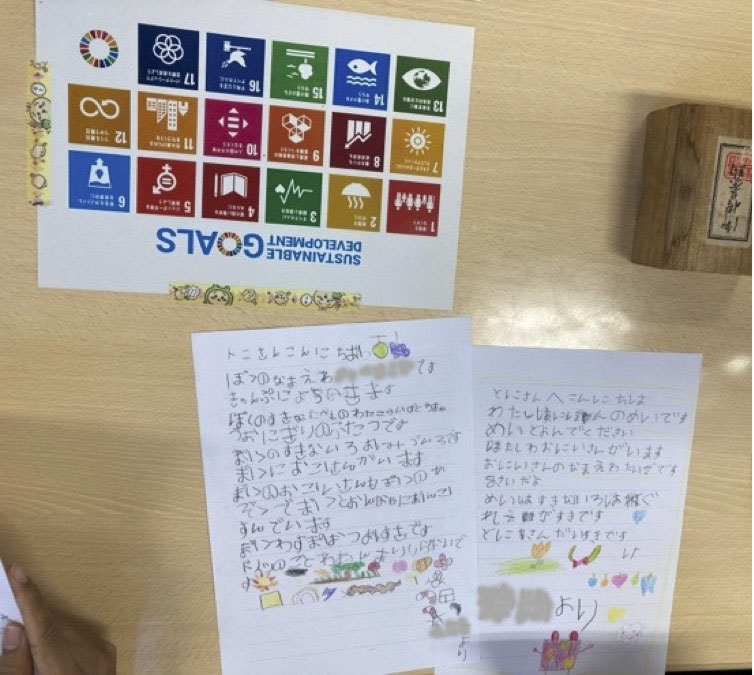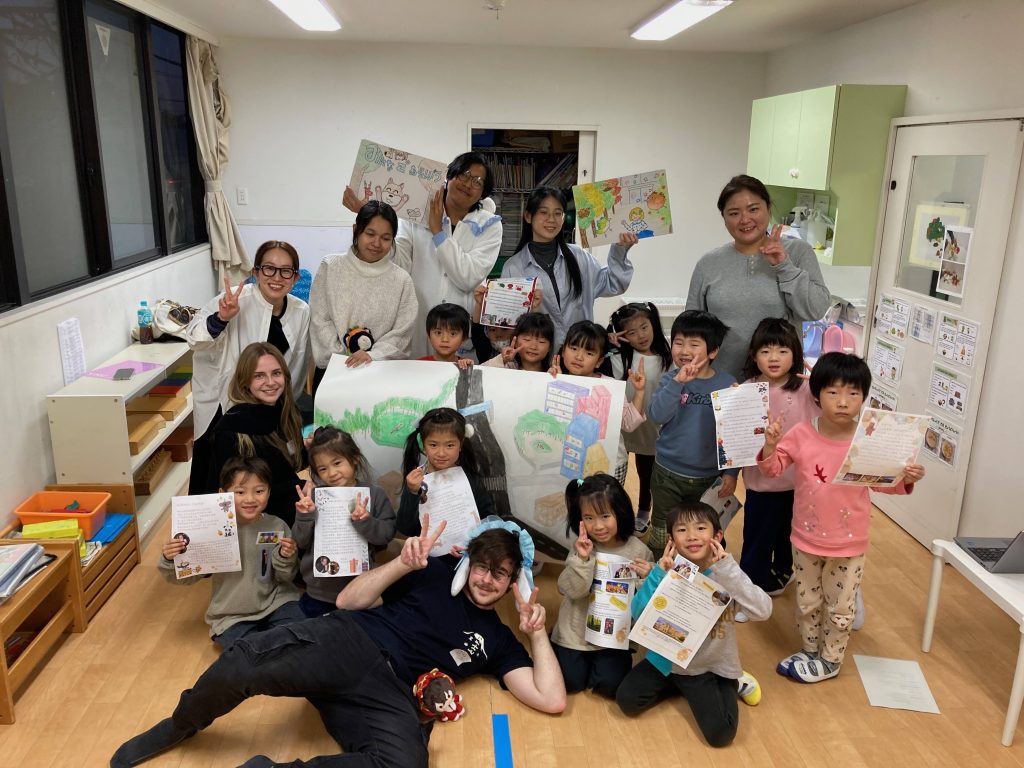As global citizens, let’s work together with the younger generation to create a sustainable society!
We held an SDGs workshop organized by international students from our university, now in its fifth year as of the 2024 academic year, at a nursery school in Yokohama. This year, five exchange students from Germany, Taiwan, the Philippines, Malaysia, and the Czech Republic conducted a series of three creative and engaging workshops.
When the workshop series first began, we were concerned that communication in Japanese might be a significant challenge for the exchange students, as they had just arrived in Japan. However, the students did not view the language barrier as a disadvantage. Instead, they came up with creative ways to connect with the children—preparing costumes, practicing greetings in Japanese, using body language and expressive intonation while reading scripts, and more. Through these efforts, they were able to successfully engage with the nursery school children. Here, we would like to share a glimpse into the workshops they designed for the children.
The first workshop focused on the theme of international exchange, aiming to deepen understanding of SDG 4 (Quality Education) and SDG 10 (Reduced Inequalities). As part of their self-introductions, the exchange students presented their home countries. To make the session enjoyable for the children, they included many photos in their slides and incorporated physical activities into games about their countries. At the end, the children located each student’s country on a world map. In line with Target 7 of SDG 4, the goal was to foster global citizenship and help children experience diverse cultures and values from around the world.
For the second workshop, the students created a kamishibai (traditional Japanese picture-story show). This was only the second time in the past five years that students incorporated kamishibai into the SDGs workshop. This year, for the first time, they challenged themselves by making hand-drawn kamishibai instead of digital ones. The main characters were familiar to preschool children—such as kids and animals—and the students designed the illustrations colorfully with crayons. They also created the storyline and composition themselves. The first kamishibai was titled “Let’s All Play Together”, and it was inspired by SDG 10 (Reduced Inequalities). The story features a young deer named Bambi-chan, who has difficulty walking. True to the message of SDG 10, the story centers on finding ways for everyone—including Bambi-chan—to enjoy playing together.
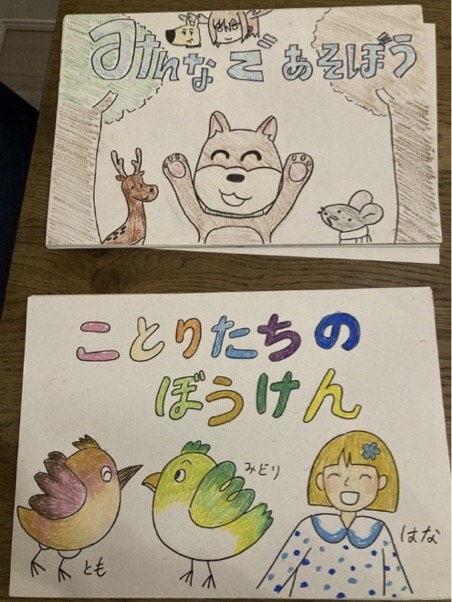
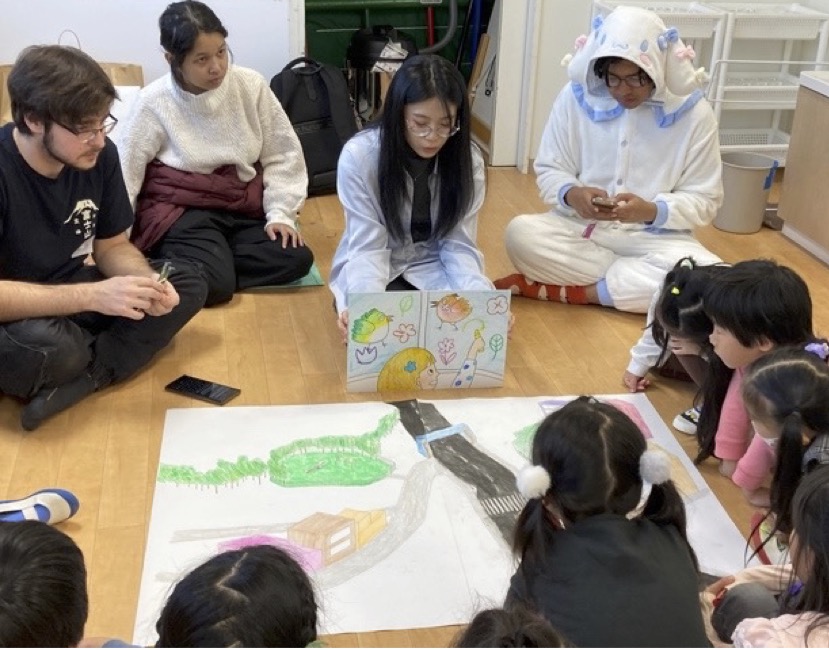
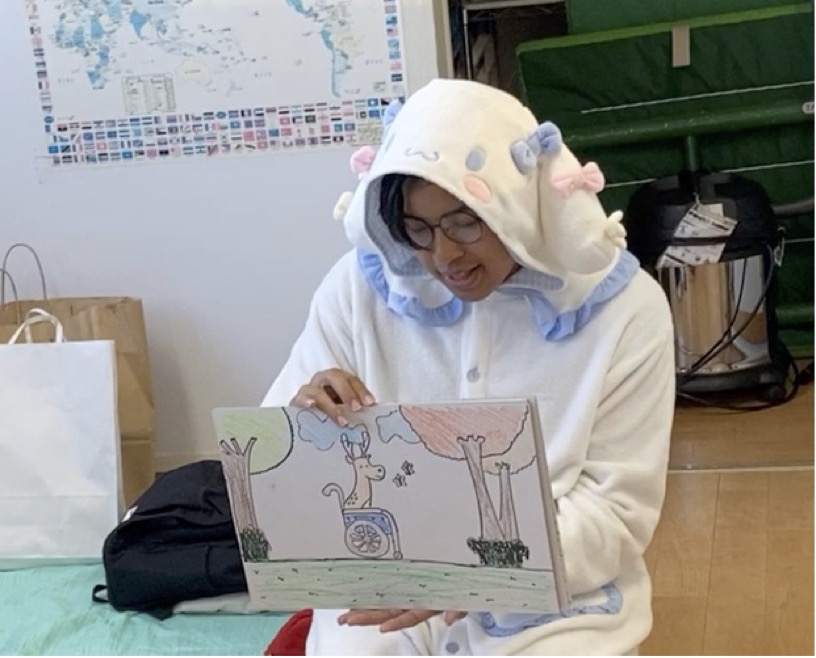
Scenes of Students Reading Kamishibai Stories
Between the two kamishibai stories, the students introduced an interactive activity using a large paper map. To help the children feel more engaged with the story world, two characters—”Grandma” and “Chibi-chan”—walked through the towns on the map, interacting with the children. Together, they explored the question: “What makes a kind and caring community?” This activity encouraged the children to think about inclusive town-building in a fun and imaginative way.
The second kamishibai was titled “The Little Birds’ Adventure.” This story was created by an exchange student from Taiwan, inspired by an environmental issue at her home university, where birds sometimes collide with buildings and lose their lives. The story aimed to encourage children to think about how we can coexist peacefully with birds and animals, connecting to SDG 15 (Life on Land). Following the story, the children were asked to reflect on the question: “What happens if people can no longer live in their town?” Their responses included comments like, “I don’t want to live in a city full of trash,” and “Would the sun disappear from the city? That would be scary.” This discussion was designed to introduce the concept of SDG 11 (Sustainable Cities and Communities) in a way that young children could relate to and engage with.
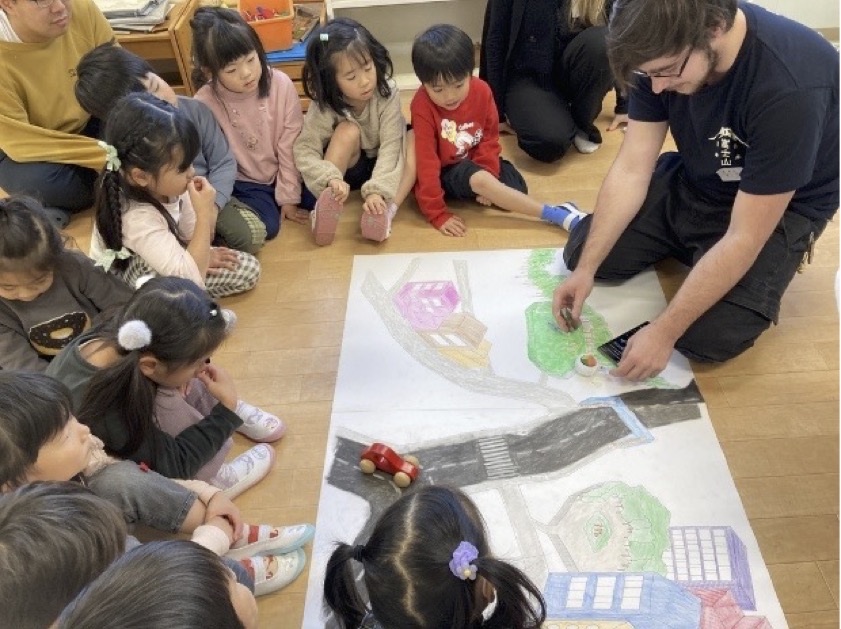
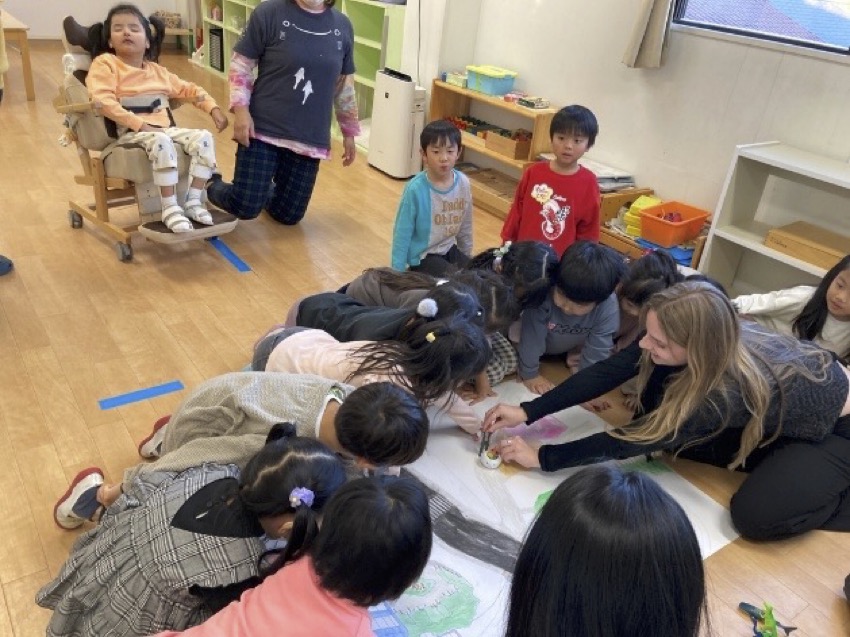
The third workshop focused on putting SDG Goal 12: Responsible Consumption and Production into practice. Instead of simply bringing “unwanted toys,” the children were encouraged to bring toys they no longer use but would like someone else to enjoy. With these toys, the students organized an SDGs-themed flea market at the nursery school. At the flea market, children first needed to obtain “SDGs Money” to participate. To earn it, they visited two activity stations: a Waste Sorting Station, where they learned how to properly separate garbage, and an SDGs Quiz Station, where they answered questions about the SDGs. After completing these activities, they used their SDGs Money to “buy” toys that their friends had brought, promoting the idea of reusing and sharing resources.
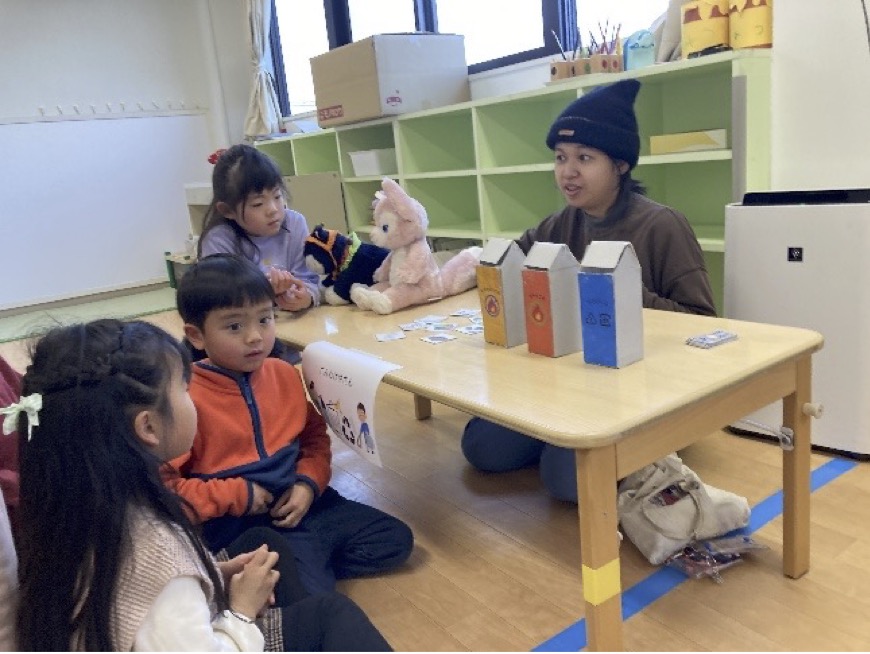

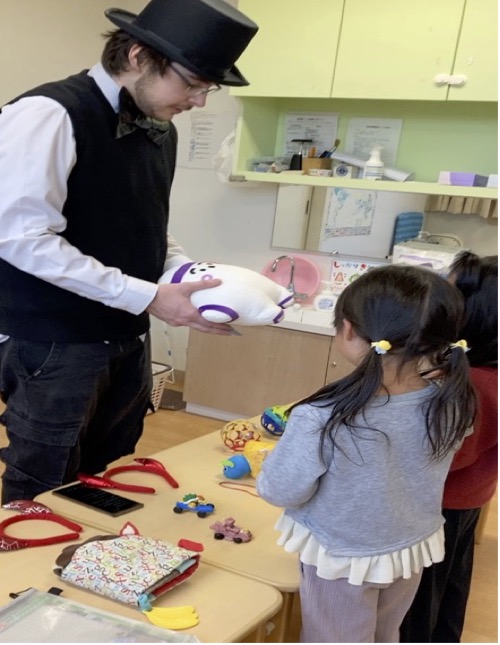
Scenes from the Flea Market
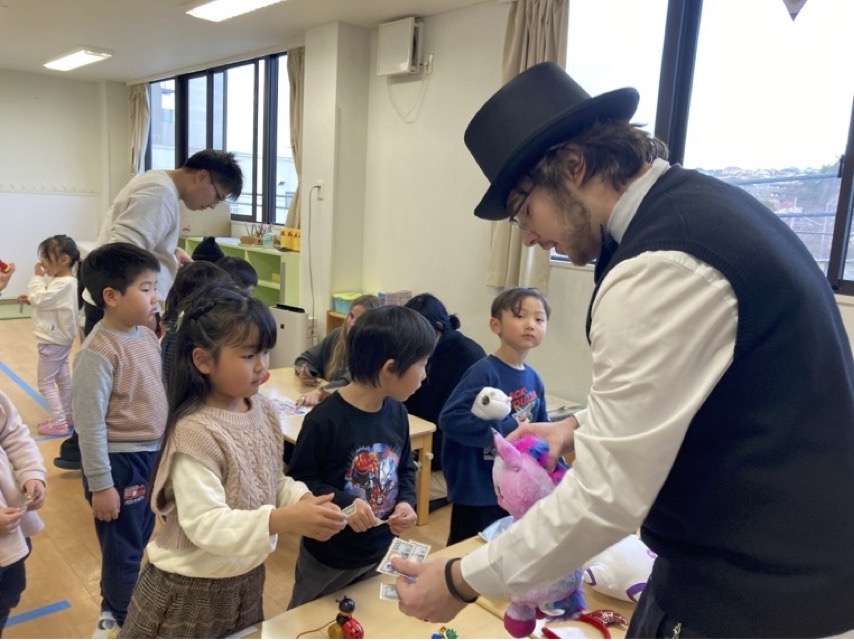
As part of this workshop series, there was also a letter exchange between the students and the children. After the second workshop, the students wrote letters to the children, and during the final (third) workshop, they received reply letters in return. Through this exchange, both sides were able to learn more about each other—such as the students’ home countries and the kinds of games Japanese children enjoy—making it a memorable and meaningful cultural interaction.
